Are you looking for a way to improve your game on the golf course? One of the ways that you can do this is by having the right putter. Finding the best golf putter doesn’t have to be difficult. There are a few things that you need to know to get the right putter best suited for you.
Finding the best putter is largely dependent on your stroke. However, it’s also about confidence, so you want a putter that has style and will allow you to be more confident on the green. So, continue reading to find out how you can find the best golf putter for you.
How to Choose the Best Golf Putter
Most people think that any old putter will do, but this isn’t true. Having the best putter for your stroke is paramount. Having the right putter will help you to lower score on the green. Each putter is weighted for different types of strokes. So, the first thing you need to do is figure what type of putting stroke you have.
The different types of strokes are:
- Open-squared-closed stroke – a toe weighted putter is best
- Straight back and straight through stroke – a face balance putter is best
Now, that you know what the different putting strokes are, we can go into more detail about them and which putters will work best. This will help you figure out which golf putter is the best choice for you.
The first thing you need to do is figure out what kind of putting stroke you have. Do you have a stroke that has a slight arc to it or do you have a stroke that is more pendulum, meaning that it pretty much stays square to the target? Once you figure this out you will be able to choose the best putter.
If you have a pendulum stroke (straight back and straight through stroke), then you should look at a putter that more face balanced. The best way to test this it to balance the putter on your hand. If the putter face points up, then you have a face balanced putter.
If your stroke is an arcing stroke (open-squared-closed stroke), then you want a putter that is toe weighted. The way you can tell this is if you balance the putter on your hand and the putter face faces downward then you have a toe weighted putter.
Once you figured out what type of putting stroke you have you need to figure out the length of the putter. There are four different lengths of putters. These are, broomstick, belly, chest and standard. So how do you know which length is best for you? When trying out different lengths you need to get into set up position.
The right length will allow you to stay relaxed without changing your wrist angle, while making sure that the putter is flat on the ground.
What to look for in a good golf putter
When looking for a new putter you need to look at a few different things before you make your final decision. There are a few simple rules or guidelines that you should keep in mind while shopping for the best golf putter to fit your putting stroke.
First thing you should look for is the right length. Once you find a putter that looks good the next thing you should do is get into your set up position. Once you are in position with your arms straight and relaxed, bend at the waist and grab the shaft of the putter.
Then, slowly straighten back into set up position. Where your hands rest once you are back into position is the correct length you need in a putter.
Next you need to make sure of the putting weight. You want something that is lightweight. The best thing to do is go for the standard putting weight. The standard putter weight is about 530 grams. Having a lightweight putter will allow you to have better control of distance.
You need to make sure that you have a putter that looks good as well as fits your putting style and putting length. If you have a good looking, stylish putter you will feel more confident and comfortable on the green.
Image | Product | Price | Rating |
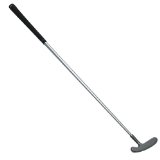 | Two-Way Putter - Left and Right Hand | $ | 4.6/5 |
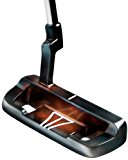 | Nextt Golf Men’s Pro Score Pearl Copper Putter | $ | 4.0/5 |
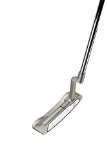 | Odyssey Hot Pro 2.0 #1 Putter | $$ | 4.7/5 |
 | Pinemeadow Golf Men’s PGX Putter | $ | 4.4/5 |
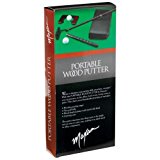 | Maxam Maxam Portable Cherry Wood Putter Set | $ | 3.8/5 |
| Cleveland Golf Men’s TFI 6.5 Blade Putter | $$ | 4.7/5 | |
 | Wilson Sporting Goods Harmonized Square Heel/Toe Golf Putter | $ | 4.4/5 |
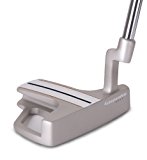 | Pinemeadow Pre Putter | $ | 4.6/5 |
| Odyssey Men’s White Hot SuperStroke RX Vline Fang Putter | $$$ | 5.0/5 | |
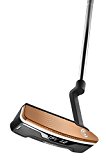 | Cleveland Golf Men’s TFI 1 Blade Putter | $$ | 4.1/5 |
Product Reviews for Different Golf Putters
Now that we’ve talked about all the different things you need to consider while looking for the best golf putter for your putting stroke. Let’s go ahead and look at some of the top-rated golf putters on the market.
QUOLF GOLF Two-Way Putter
This is a putter if you’re just learning how to golf. This is a great training aid and will help you to get control and teach you the basics of putting. This is a lightweight golf club that is excellent for indoor putting or to add to your golf bag due to its classic look.
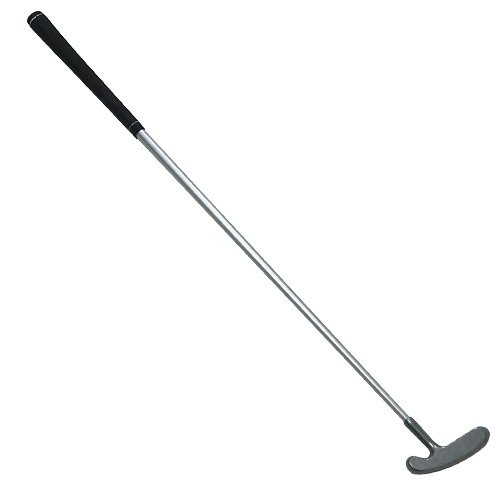
Features
- Lightweight
- Made for left or right handed players
Pros
- Lightweight
- Used by either left or right handed players
- Classic loo
Cons
- Should only be used on indoor courses
- Not great for the more experienced golfers
Summary
If you’re new to golfing or just looking for a putter that can be used indoors then this is a putter that you should consider. Not only is a great training aid, but it’s lightweight and can be used for both a right or left handed player. It’s made from quality material and can be used by pretty much anyone.
Comparison
Now that you know about this great putter let’s go ahead and compare it to other top-rated putters on the market. Let’s compare it to the Wilson golf putter. These two putters have a lot in common and share a lot of the same features.
There is, however, one feature that the quolf golf putter has the Wilson doesn’t and that is it can be used by either a right or left handed person making it one of the most versatile putters on the market today.
Another golf putter that we can compare is the pinmeadow putter. Again, this putter shares a lot of the same features as the quolf putter. It’s lightweight and great for indoor use. There is one big difference between these two though and that is the quolf can be used by a righty or a lefty and the pinmeadow is good for only a right-handed player.
Verdict
Now that you’ve read all about quolf putter and what it has to offer; and you were able to read different comparisons with other top-rated golf putters let’s go ahead and rate the quolf putter. This putter has earned its five-star rating. You will be able to enjoy this putter and all its benefits at a very reasonable price.
Nextt Golf Men’s Pro Score Pearl Copper Putter
Are you looking to up your putting game? Well look no further because the nexxt golf putter will help you do that. This putter was designed for all types of players. It’s made to give you optimum performance and flexibility on the green.
Even if you’re a beginner golfer this is a great putter to have. You will not only up your game on the golf course, but you can also use this putter on indoor courses as well. It’s also a great training aid, and will help you improve on your putting stroke.
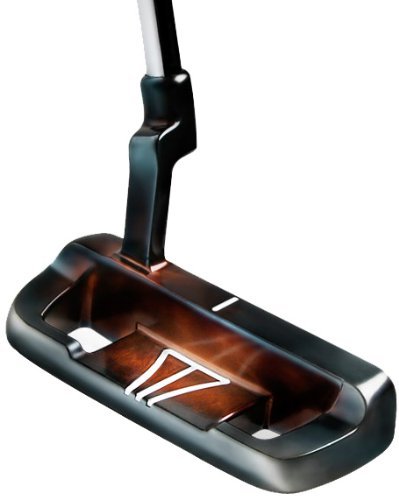
Features
- It has a custom grip
- It’s made from material that doesn’t glare when in the sun
- The putter head is mallet shaped
- Easy to line up your shot
Pros
- No glare
- Mallet shaped putter
- Custom grip
Helps make lining up your shots easier
Cons
- It has an insert
- Only made for right handed players
Summary
There are a lot of good things that you will get when you purchase this putter. Not only will you get a putter that will help you perform better and give you more flexibility on the green, but you will also be getting a putter that has great balance.
There are other features that the nexxt golf putter offers too. You will get a putter with a custom grip that is comfortable and easy to hold. You will also notice the reduction of glare when you use this putter. It’s made from a material that reduces glare.
There are only a few things that you should consider before you buy this putter, which are having an insert and that only right handed players can use it. So, make sure to keep these two things in mind when looking at this putter
Comparison
Now that you’ve read and learned all about the nexxt golf putter let’s go ahead and compare it to another top-rated golf putters on the market to see how well the nexxt golf putter stands up.
First let’s look at the Wilson staff golf putter. These two putters have a lot in common and share a lot of the same features.
One of the biggest differences between these two is comfort. The nexxt golf putter has a custom grip that is super comfortable and the Wilson staff has a standard grip which can be uncomfortable to some people.
Verdict
Now that we talked about all the different features and even compared the putter to another top-rated putter we can now go ahead and rate this product. This product deserves its five-star rating.
You will not only get some great features but you will also get a putter that will help you perform to the best your ability. You will get all that for a very reasonable price.
Callaway Odyssey Golf Putter
Are you looking for putter that will improve your golf game? Then this is the putter for you. This is one of the best putters on the market. It can be used by either right or left handed players. It comes in many different lengths, so you shouldn’t have any trouble finding a callaway putter that is perfect for you.
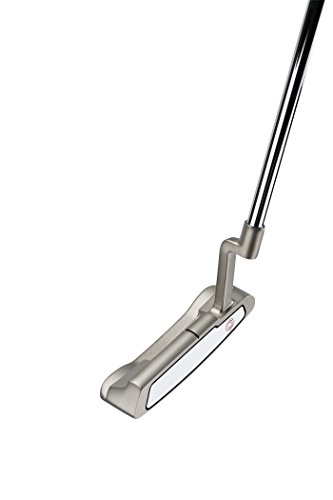
Features
- Many different head shapes
- Different lengths to choose from
- Made for maximum performance
- Lightweight
Pros
- Many different sizes to choose from
- Different head shapes to fit any putting stroke
Cons
- The head is to lightweight – it can be hard for some to putt with.
Summary
This is a great putter to have if you’re looking for something that is lightweight and will give you maximum performance. There a lot of other great features that you can look forward to.
You will be able to choose what head you want as well as the length you need. This is an amazing feature because you will be able to get the perfect performing putter.
Comparison
Now that you know all about the callaway putter and all its features. Now we can go ahead and compare it to another top-rated putter on the market.
Let’s look at the cleaveland golf putter. These two putters share a lot of the same features. They both are for right handed players and are made to be lightweight. Both putters will be able to give you maximum performance on the green.
The biggest difference between these two putters is the fact that you will have more choices with callaway putter. With the callaway you will be able to choose which head and length you want.
Verdict
With everything that you’ve learned about the callaway putter you can see that it deserves its five-star rating. You not only get a putter that will help your performance, but you will also be able to choose what head and length you want. This will help you get a putter that is custom made to fit you.
Pinemeadow Golf Men’s PGX Putter
The pinmeadow golf putter will help your performance on the green. With the putter being a bright white you will be able to focus better, which will help you when you’re trying to make a complicated shot.
The putter is weighted, which is highly recommended if you’re playing on a faster green. These types of greens are becoming more common, and this putter will help you get a great score.
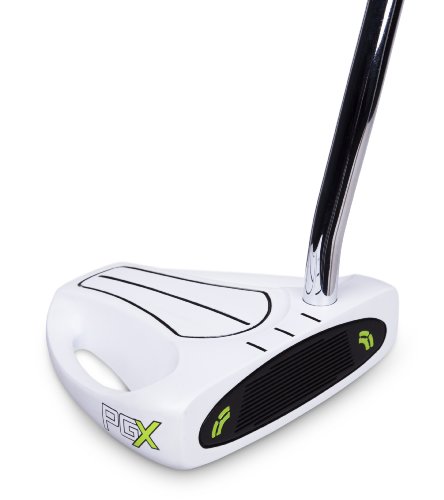
Features
- Bright white color
- Having a weighted head will help on faster greens
- Comes with a custom head cover
Pros
- Weighted head
- Bright color
Cons
- Only comes in one length
Summary
There are a lot of things that you will be able to look forward to when you get this putter. You will be a getting a putter with a head that is bright white. This helps you focus on the putter and will help you to make those difficult shots.
If that isn’t enough to make you want this putter you can also look forward to a weighted head, which will help your performance when playing of faster greens.
Comparison
With everything that you’ve read about the pinmeadow putter it’s time to see if everything you’ve read will hold up when we compare it to another top-rated golf putter on the market.
Let’s look at the ray cook golf putter. These two putters have a lot in common they are both made for right handed players. Another thing that these two putters share is that they are both weighted, which will help you play better on faster greens.
The one big difference between these two putters is that the pinmeadow’s head is bright white in color. This will help you focus on the putter and your alignment of those complicated shots.
Verdict
With everything that you’ve read and learned about the pinmeadow golf putter you can clearly see that it deserves its five-star rating. You will not only be getting a putter that will enhance your performance on the green, but you will also be getting a putter that is sleek and stylish.
Maxam Portable Cherry Wood Putter
If you’re looking for something that is lightweight and can be taken anywhere then you should think about maxam wood travel set. This is a travel putter set that is made from beautiful cherry wood. You can use this practice set anywhere.
It comes with a putter, two golf balls, and a wooden golf hole. This will keep your putting skills in top shape while you’re traveling.
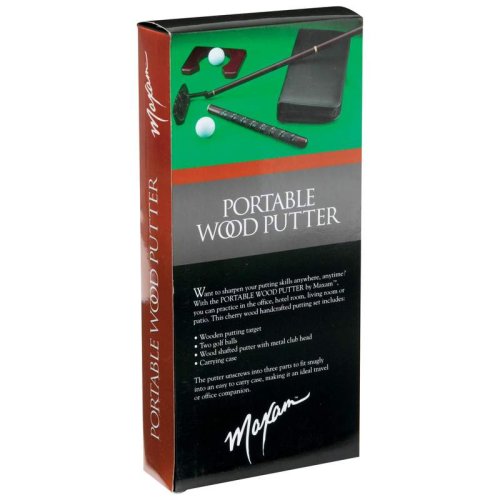
Features
- Comes with a carrying case
- Made from cherry wood
- Can be set up and used just about anywhere
Pros
- Easy to carry case
- Great to practice with
- Easy to set up
Cons
- Wood threading – You need to be careful when screwing it together
Summary
There are a lot of great things that you will gain from getting this putting set. One of the best things is that you will be able to take it anywhere and practice pretty much anywhere. It also comes in a black vinyl carrying case, which makes taking it with you easy.
Since it’s so portable you won’t have any trouble practicing your putting stroke and keeping in top shape for when you’re on the green.
Comparison
Now that you’ve got to see all the different features of the maxam wood travel set let’s see how well it does when compared to other top-rated travel sets on the market.
Let’s look at the neon travel putter set. These two travel sets have a lot in common. They both come with carrying cases that make it easier to take this set anywhere.
Another feature that they both have in common is that you will be able to practice your putting stroke anywhere, anytime. One of the things that the maxam has going for it is that it’s lightweight, which makes it a lot easier to carry.
Verdict
Now that we’ve talked about all the features and even compared the maxam travel putter set to another travel set we can go ahead and rate the maxam. This travel set deserves its five-star rating. It’s lightweight, easy to carry, and will allow you to practice your putting stroke anywhere, anytime.
